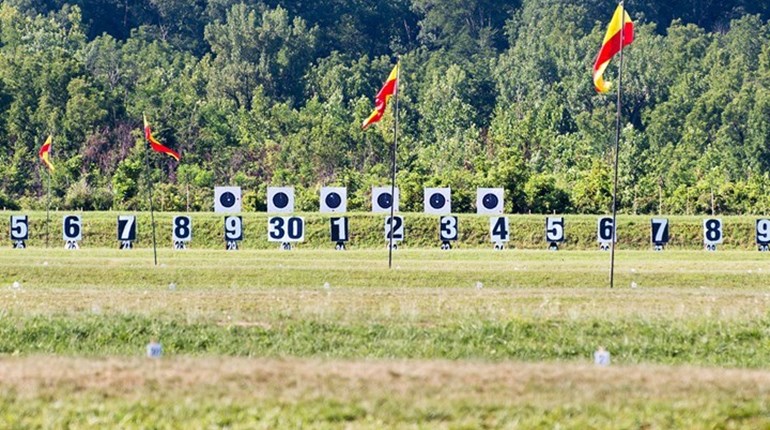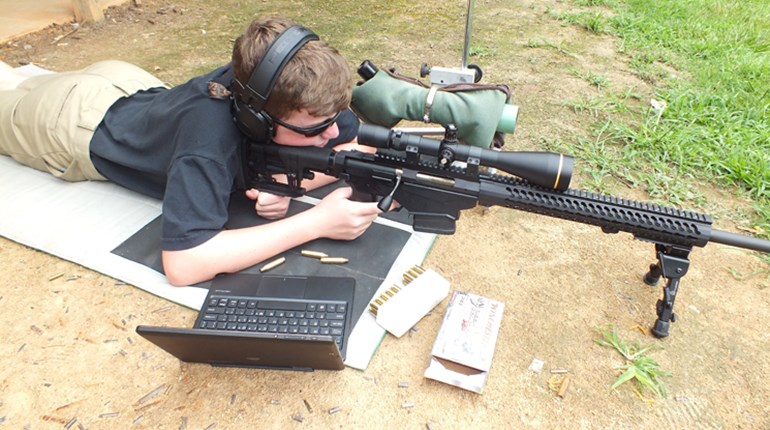
I made the comment to Chip Lohman, the editor that "I lost my connection to the wind" when asked about how I did in a match. He asked what I meant by that and this article is the result.

I have been watching the wind while shooting HP competitions since 1971 and I have still not learned how to read it. Hundreds of people at various times have asked how I read the wind and most don't seem to believe me when I say "I can't read it".
The normal come back is, "then how to you score so well?" I am going to try an answer that by explaining what I do when shooting a match. Take it for what it is worth.
First off I have always had a terrible memory. Heck I have to check my ID card when I get up in the morning to see if I am who I think I am. I truthfully forget where I held the last shot many times if something distracts me in the least.
Now there are many good, nay great "wind readers" out there. These people can read the wind like a speed reader can read a book! People like Mid and Nancy Tomkins and her daughter Michelle Gallagher. They do an amazing job of doping the wind. There are many good books that can explain how to do it. I have read them. I still can't do it.
My normal simple come back to the "then how to you score so well?" question is, I chase the spotter. And that is what I do. I'll come back to that statement in a bit.
You have probably heard that you should look at the flags before you go up to shoot or while you are scoring. You should time the pick up's and let off's so you can plan on when to shoot. You have to have a plan before you start shooting. You should watch other shooters targets for change indications. Listen for bad shot comments. The list goes on and on. All these are great things to do and if you can apply them they do work quite well.

Now I try to do these things...but once I start shooting it all seems to go out of my mind. Why you ask? One reason may be because I am left-handed and just intuitively do many things without thinking. It may also be because the only time I shoot, except for the 2-4 times a year I shoot in major matches, is when I am working up a load for new barrels.
The range I shoot on allows me to shoot out to 1,000 yards, but it has NO flags, no pits and I don't even try to read the wind. I let the bullets go where they may while testing, but I try to test in good conditions. I am mainly concerned with the elevation of loads. Since I don't get any practice and shoot few matches I haven't developed the habit of watching flags, etc.
Because most of my shooting is in the sunny dry west I rely mainly on mirage appearance changes as an indicator of speed. The last few years I have tried to increase my use of other indicators but my success has been pretty dismal. After a few shots I fall back on old habits and the only time I look at a flag is when my target comes up with a 9 on it. By then I can't remember what the flags looked like when I started.
So....what do I do to win as much as I do? As I wrote before, I basically chase the spotter. I try to connect with the wind since I know I can't read it. I use the word "connect" because when I am connected (i.e. in the zone!) I can see mirage changes pretty well. If I become unconnected due to a distraction of any kind I have lost the wind connection and usually points.
Of course I am watching what indicators I can while "chasing". I try to note what the mirage looks like and file it away in my mind's eye. Of course here comes that old memory problem, da. I keep my eye in my rifle scope as much as I can while the target is in the pits. I don't use a spotting scope and I don't plot shots. That is too distracting for me.
As the target comes out of the pits I close the bolt on the next round and observe the spotting disk's location in relation to where it was on the last shot. As soon as this info registers in my mind I automaticlly calculate what I hope is the correct hold for the next shot based on the spotter location, any mirage change ,factoring in the mirage image in my mind (if I can remember it), aim and pull the trigger. After loading the following round I am again looking for any increase or decrease in the mirage and add that to the equation for my next shot based on the spotter location coming out of the pits. If the mirage looks in any way different it is worth something!
These hold off calculations are not a conscious 2, 3, or 5". I just get a feel for what I need to change in my hold. I am talking 1,000 yard shooting, which is what most of my matches are. Many times I am just changing a 1/2" or 1" based on a feel of the mirage.

Example, I fire a center shot; the target comes out of the pits I am expecting a pinwheel X and I have mid ring 10 at 3 o'clock. This is 5" right of aim so I would normally hold mid ring 10 at 9 o'clock, but I see a slight pickup in the mirage from the left so I would break the shot on the 10-9 line at 9 o'clock. If after firing the round in the rifle it comes up mid ring X at 3, I would move my aim point back to the left maybe another 1/2" or 1" trying to keep the shots away from the 10/9 line on the right. We have to consider group size when doing this. I go back and forth across the target based on show and tell. The spotter shows me where the bullet went and that tells me where, with up to date mirage info, I should hold for the next shot.
What I am trying to do is stay ahead of any changes in wind speed and direction. Changes can happen fast but most of the time they take a while to build and to decrease. I am trying to surf the wind and ride the wave to stay on top of it. I will tell you now it doesn't work all the time, but it has worked pretty well for me over the 15 years of my F-Class shooting.
Can I get wiped out? Of course I can. Slow pit service can cause me headaches. As can hitting the spotter spindle and hearing the line officer call "target repair on target # mine". I hate it when that happens! Anything that keeps me from riding the wave can force me back into the conventional style of doping the wind. Of course any shooter, even the best "wind doper" can get wiped out by a tsunami wind change no matter what their style of shooting. When I lose my connection I'm basically starting over with no sighters to go by. I just say a prayer, take my best guess and pull the trigger. But that guess, if a good gut feeling, can get me back in the zone and connected again. If so, I am back on the board and surfing again.
Shooting Fullbore style shooting is a prime example of what causes me problems. When forced to pair fire or shoot 3 to the mound I just have to fall back on what I can remember from the books I have read and lectures I have had on the firing line. I still try to surf the wind, I just have to pay more attention to what is happening during the time I am scoring the other shooters target.
If you like, try my style of surfing the wind, just don't blame me if you get wiped out and buried in the firing line sand.
See you on the firing line. I'll be the guy day dreaming during the prep period rather than watching the flags.



































